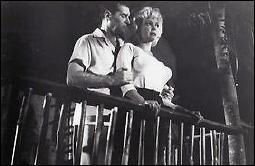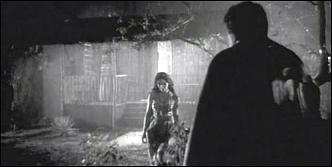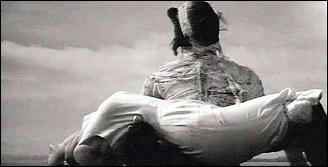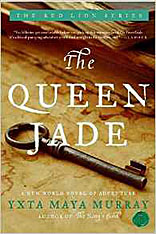Sat 17 Sep 2016
Cable TV Movie Review: LOVE, CHEAT & STEAL (1993).
Posted by Steve under Crime Films , ReviewsNo Comments
LOVE, CHEAT & STEAL. Showtime, 1993. John Lithgow, Eric Roberts, Mädchen Amick, Richard Edson, Donald Moffat, Dan O’Herlihy. Screenwriter/director: William Curran.
There are some bits and jots of a good film noir story here, along with a bank heist that goes bad — don’t they all in movies like this? — but the pieces didn’t really jell for me. I believe this movie, which I taped off the Showtime movie channel back in 1993, is also available on DVD, but if you want my advice, in spite of some good reviews left by commenters on IMDb, I don’t believe you want to shell out a lot of money for it.

Here’s a quick outline of the story, or as quick as I can make it. John Lithgow is an older man with a young attractive wife (Madchen Amick), the basis of plenty of good stories already. It turns out, though, that she was once married to a nogoodnik (Eric Roberts) whom she failed to get a divorce from after making sure he was safely in jail. He has now broken out and is coming to find her.
It also turns out that Lithgow’s father’s bank has been used as a money laundering way station. The men overseeing everyday operations have been working hand-in-hand with the local gang of drug crime lords. Roberts is appropriately slimy — he introduces himself to Lithgow as Amick’s brother — and what can she day to stop him?

She’s caught in middle, in other words. Does she love Lithgow, or is she really interested only in his money? Is she still attracted to Roberts, her real husband? I will not tell you, but even with the aforementioned bank heist that goes bad, not really interesting happens until the end, which is worth waiting for, but until then the tale is only indifferently — and often confusingly — told.
A better femme fatale may have helped. In daylight Madchen Amick is quite pretty if not really strikingly beautiful, but indoors and in bad light, she is so physically tiny that the darkness seems to simply swallow her up.
I would like to go back and see how well the ending — which is a doozy — actually fits, but all in all, one time only is the limit I’ve restricted myself to for this one.




